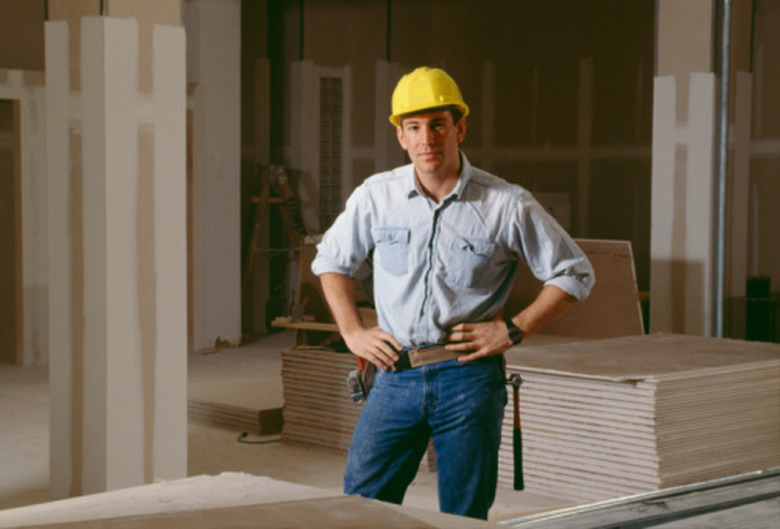Paneling Vs. Drywall
The choice between wood paneling and drywall depends on personal style, time and money. Each material has its advantages and disadvantages when compared with the other. But in some cases drywall and paneling comprise a complementary pair rather than separate and exclusive options. Knowing the facts about drywall and paneling will you give you confidence to make the right choice for your home or project.
Drywall Advantages
Drywall Advantages
Drywall started replacing plaster as the wall covering of choice after the 1930s, particularly because of its faster installation. It's composition of dried gypsum mineral and crystallized water gives drywall one notable advantage in home construction: fire resistance. According to the "Ultimate Guide to Drywall," water makes up 21 percent of drywall's weight and 50 percent of its volume. Thus drywall can help keep a fire from spreading.
Also, the gypsum in drywall absorbs sound effectively, making it a good choice for quieter rooms. Drywall also resists fracturing and can be repaired easily with patching compounds if damaged. And its paper surface makes it compatible with multiple surfaces, such as paint and wallpaper.
Drywall Disadvantages
Drywall Disadvantages
The mineral-water combo that makes drywall advantageous also brings some disadvantages, such as heavier weight. The "Ultimate Guide to Drywall" notes that a 4-by-8 foot panel of half-inch thick drywall weighs about 54 pounds. These panels typically are delivered in two-sheet bundles. So, for safety reasons, two people should handle a bundle at a time.
Additionally, unless you invest extra time into painting or covering the drywall, it doesn't present a very attractive appearance.
Paneling Advantages
Paneling Advantages
Wood paneling can give a room a finished, natural look and a warm feel. It's easy to cut and trim, which will give a professional-looking finish. Two main paneling options include sheet paneling and board paneling, with the sheet option being less expensive. The board paneling option, notes the "Ultimate Guide to Home Repair & Improvement," offers authentic wood tones and compensates for the higher cost in both material and labor.
Paneling Disadvantages
Paneling Disadvantages
Because of the greater attention needed for cutting and trimming wood, paneling may take more time and cost more than installing drywall. Also, paneling doesn't work as a sound barrier the way drywall does. Thus, in a workshop, installing wood paneling can produce a noisy, even irritating, atmosphere.
The darker colors in wood may also give a more closed-in, cave-like feeling when compared with drywall's light-reflective character. Still, drywall and wood paneling sometimes go well together. One collaborative option involves installing drywall covered with wood paneling, thus gaining the advantages of both.
References
- "Ultimate Guide to Drywall: Pro Tips for Hanging & Finishing"; John D. Wagner; 2005
- "Ultimate Guide to Home Repair & Improvement"; Creative Homeowner Press; 2006
- "Setting Up Shop: The Practical Guide to Designing and Building Your Dream Shop"; Sandor Nagyszalanczy; 2006
